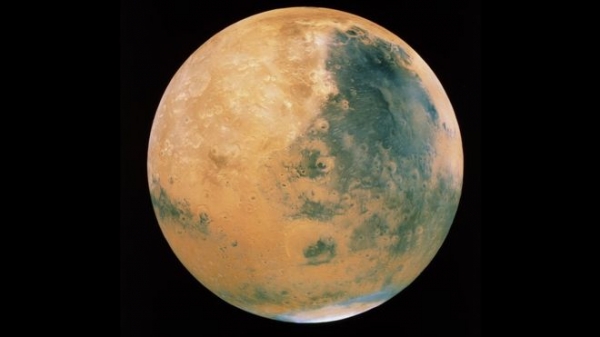Researchers have found evidence of an existing body of liquid water on Mars.
What they believe to be a lake sits under the planet's south polar ice cap, and is about 20km (12 miles) across.
Previous research found possible signs of intermittent liquid water flowing on the martian surface, but this is the first sign of a persistent body of water on the planet in the present day.
Lake beds like those explored by Nasa's Curiosity rover show water was present on the surface of Mars in the past.
However, the planet's climate has since cooled due to its thin atmosphere, leaving most of its water locked up in ice.
The result is exciting because scientists have long searched for signs of present-day liquid water on Mars, but these have come up empty or yielded ambiguous findings. It will also interest those studying the possibilities for life beyond Earth - though it does not yet raise the stakes in the search for biology.
The discovery was made using Marsis, a radar instrument on board the European Space Agency's (Esa) Mars Express orbiter.
It's probably not a very large lake," said Prof Roberto Orosei from the Italian National Institute for Astrophysics, who led the study.
Marsis wasn't able to determine how thick the layer of water might be, but the research team estimate that it is a minimum of one metre.
"This really qualifies this as a body of water. A lake, not some kind of meltwater filling some space between rock and ice, as happens in certain glaciers on Earth," Prof Orosei added.










